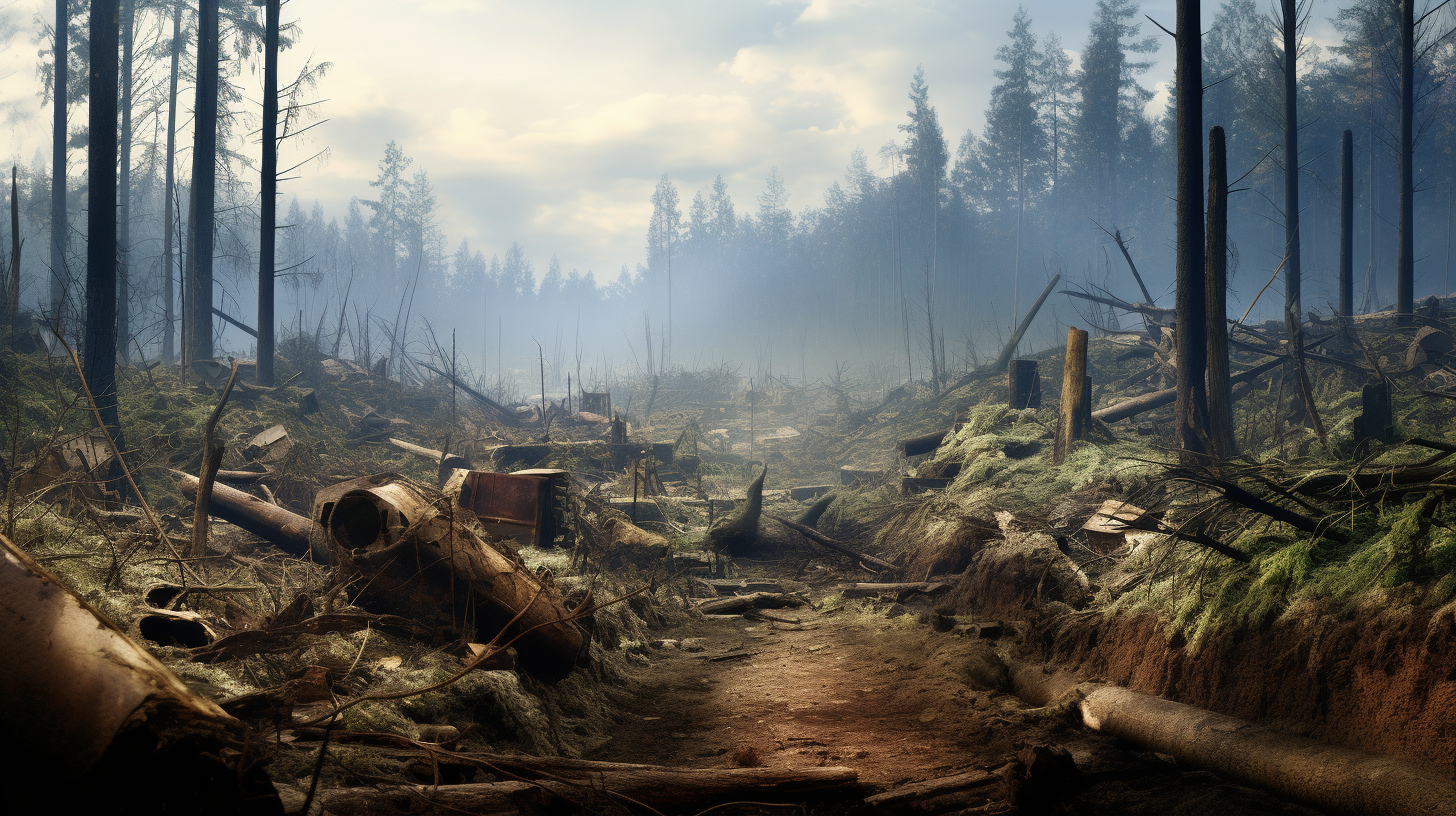In a world blighted by the scars of environmental abuse, the forests – once brimming with verdant promise – retreat in silence, leaving behind a realm of despair and an unspoken warning to humanity. Yet, what truly remains when the forest’s verdurous whispers quieten into hush? As we peel back the foliage of yesteryears, we are greeted by an eerie otherworld built on the skeletons of a lush past.
Where titanic canopies cleaved the skies, now sun-scorched clearings stretch barren, with cracked earth where rivulets of life once flowed. The wildlife, former denizens of the woodland’s embrace, are forced into roles unbefitting their natures. Here, melancholy specters glide through the remains: feral hogs rooting in the remains of collapsed supernovas of flora, or the lone coyote prowling past the dwindling vestiges of what was once a nurturing expanse.
In the fringes of the receding woods, the ghostly remnants of human havoc bespeak the somber narrative of exploitation. Abandoned logging camps rust in the corrosive grip of time, their machinery entwined with climbing vines that reclaim the tainted soils. Parks and nature reserves are witness to the resilience of life, with hardier species fighting to cover the gashes left by our own neglect.
The stark contrast between what urban jungles became – as discussed in the article ‘Jungle Metropolis – The Rebirth of Nature in Abandoned Urban Spaces‘ – and these desolate clearings is profound. Cities, empty of human inhabitance, are being woven anew with life’s tapestry, whilst our once cherished sanctuaries of nature fall to ruin.
The reticent language of disappearance inscribed upon the vacated forest floor festers with portents. Should these damning carvings fall deaf on our ears, the unerring continuation of this backslide will see a future where the apex predators are not lions or tigers, but the specter of hunger, thirst, and the relentless march of desolation. It is a harbinger of a time when the oxygen-rich breaths of ancient woods dissolve into a chronic gasp for air in pollution-choked cities, a sentiment we explored on the 17th with ‘Whispers of Gaia – The Silent Outcry of a Planet in Peril‘.
And yet among the ruins, there exists an uncanny paradox of hope. Nature persists in pockets, a defiant testament to the cycle of life. In the tangles of once luxuriant foliage, the incessant hum of insects still choruses, heralding a stubborn assertion of existence against all odds. It is here, in the minute, we may find the seeds for reflection, for these tiny warriors hold the torch of life aflame amidst the twilight of their domains.
But, let us not fool ourselves into complacency. The narrative skewed towards restoration rings hollow in a land where the possibility of redemption is but a whisper drowned in a cacophony of past transgressions. The dregs of a world that once was become the canvases of a foreboding future, and the relics left behind a testament to the tenacity of decay.
Therefore, ponder on what truly remains when the forests retreat, and whether this desolate aftermath is the legacy we choose for ourselves. The theaters of regeneration within urban realms offer us an ephemeral solace yet underscore the urgency with which we must invert our course away from the dystopian prelude we seem hell-bent to score.
What remains is more than a rhetorical muse; it is a tangible, sobering panorama of opportunity and loss. It is the clarion call to wake from our stupor and to testify, act, and perhaps, to transform the prophetic yarn we are currently weaving.
